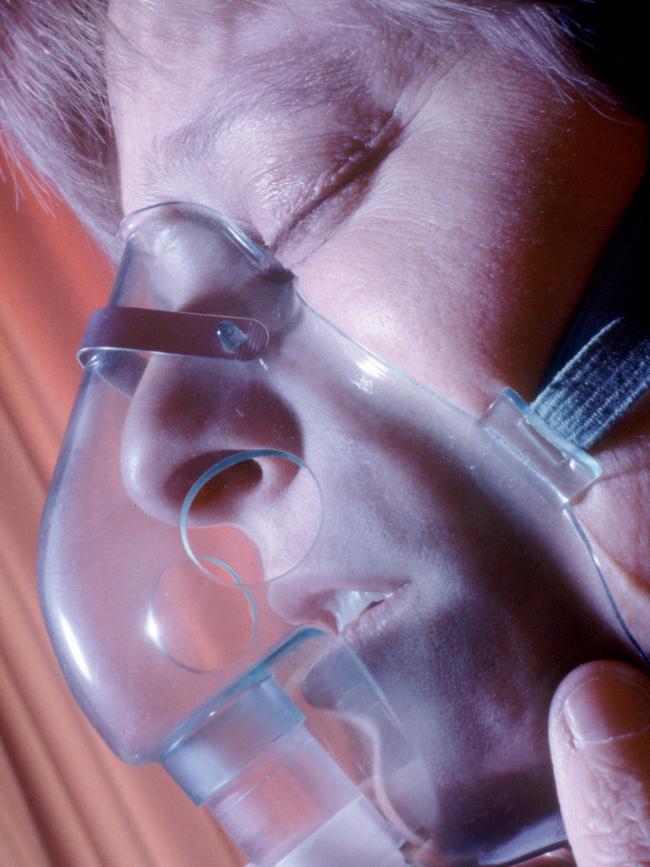Beyond asthma: Designing inhaled drugs to fight more diseases
Vaccines, chemotherapy are among medicines that could be delivered through the lungs; ‘We’re pushing the boundaries of delivery’.

Treatments for asthma have long been delivered through the airways. Now researchers are developing inhalable therapies to target a wider range of ailments from cancer to diabetes.
Constantly exposed to the outside world as we breathe, the lungs are a first line of defence against infection. They also provide a direct pathway to the circulatory system as they send oxygen to the blood. Researchers hope that delivering medicines directly to the lungs can exploit those characteristics and make drugs that are more efficient and effective than oral or injectable drugs – and maybe easier to take.
They are harnessing technologies ranging from nanomedicine to gene-editing tools and particle engineering to improve how medicines interact with the lungs, targeting lung diseases such as cystic fibrosis and lung cancer as well as less obvious conditions including schizophrenia, migraines and Parkinson’s disease.
“We’re pushing the boundaries of delivery,” says Philip Santangelo, a professor of biomedical engineering at Emory University, a top research campus in Atlanta, Georgia. Respiratory diseases that spread through the air are a key target.
Santangelo and colleagues are developing inhalable drugs that use a molecular editing tool to kill viruses such as Covid-19, influenza and respiratory syncytial virus.
Using nebulisers that dispense medicine as mist via a mask, they have tested the delivery of some of the medicines on rhesus monkeys, cows, horses and pigs. The tests in pigs have shown that getting the drugs to the lungs reduces the severity and spread of infections, Santangelo says.
“If you want it in the lung, we thought we should get it into the lung,” he says.
Researchers are also applying that logic to other conditions, including some cancers. Oncologists at the University of California are investigating an inhaled immunotherapy for cancer that would boost the ability of special immune cells in the lungs to fight disease.
Nanomedicine researchers at Johns Hopkins University in Baltimore, Maryland are developing an inhalable gene therapy that aims to cure cystic fibrosis, a genetic condition that damages the lungs and digestive system.
Cystetic Medicines is making an inhalable version of amphotericin B, an antifungal, to treat the disease. Amphotericin B’s usually severe side effects are reduced when the drug is targeted to the lungs, where it can change the way some cells function to counteract the disease, the company says.
People have been inhaling medicines for millennia. A papyrus scroll dated to around 1554BC, discovered with an Egyptian mummy, described patients inhaling vapour from herbs heated on hot bricks. Greek physician Hippocrates, who lived around 400BC, detailed the therapeutic use of boiling herbs and resins in vinegar and oil and inhaling the fumes through a reed.
Inhalable medicines have come a long way. Exubera, launched in 2006 by Pfizer, was one of the first inhalable drugs the US Food and Drug Administration approved for a disease not specific to the lungs. It was shown in clinical trials to be as effective as other insulin products, but patients and doctors were hesitant to use it, drug-delivery experts say, partly because of safety concerns and it required a bulky inhaler that resembled a bong. Pfizer stopped marketing Exubera in 2007. The company says while the drug was safe and effective, it hadn’t met customer or financial expectations.
Inhalable drugs and vaccines can be deployed in different ways. In one method, researchers target the lungs directly, using nanomedicine and other technologies to get treatments to tumours, microbes or immune cells.
Another approach is to send drugs through the alveoli, tiny air sacs deep in the lungs, to reach the bloodstream quickly.
Afrezza, an inhalable insulin from MannKind that the FDA approved in 2014, is administered with an inhaler about the size of a referee’s whistle. Afrezza isn’t recommended for smokers and people with lung conditions such as asthma, and there may be less dosing flexibility compared with injectable insulins, which can be dosed in smaller increments, says Jennifer Goldman, a professor of pharmacy practice at Massachusetts College of Pharmacy and Health Sciences.

MannKind says its inhaled insulin acts faster than injectable mealtime insulin and precise dosing hasn’t been a problem in clinical trials. The company says it is enrolling children aged from four to 17 for a pediatric trial for Afrezza.
At the University of Delaware, biomolecular engineer Catherine Fromen is exploring ways to design custom inhalers. Using 3D-printed lungs and also a robot lung made from plastic tubes and inflatable containers, Fromen is developing computational models to customise inhalers based on how deeply people breathe and how diseased their lungs are.
“My lungs are different from your lungs,” she says.
A drug’s path from the lungs into the bloodstream is determined in part by its particle size and aerodynamic properties as well as the type of inhaler. The link to the circulatory system involves a network of air-carrying tubes ending in millions of the one-cell-thick sacs called alveoli that move oxygen and carbon dioxide in and out of the bloodstream. The smaller the particle, the deeper the drug tends to go into this network.
But there is a limit. If a particle is smaller than about a micrometre, more of it may be exhaled than deposited in the lungs. Depending on its target, drugs are designed to stick to, penetrate or evade the various mechanisms in the lungs – such as the protective mucus barrier – that work to clear contaminants from the airways, drug-delivery experts say.
Inbrija, an inhalable version of the Parkinson’s drug levodopa, is inhaled into the deep lungs and quickly enters the bloodstream thanks to its design, says Ron Cohen, president and chief executive of its developer Acorda Therapeutics. Created using a spray-drying technique, the powdered drug is made of microscopic particles that resemble crumpled balls of paper with a lot of surface area, Cohen says. The FDA approved Inbrija in 2018.
“It is extremely light and gets absorbed extremely quickly,” Cohen says.
Pulmatrix is using spray-drying and other particle-engineering techniques to develop potential inhalable drugs for migraines and aspergillosis, a fungal infection.
Alexza Pharmaceuticals, which makes an inhaled drug that treats agitation associated with schizophrenia and bipolar disorder, is exploring other inhalable treatments including one that could stop epileptic seizures.
Alexza has developed an inhaler that turns a solid drug into vapour using rapid heating.
InhaTarget Therapeutics is conducting a clinical trial in five hospitals in Belgium to investigate inhalable cisplatin, a chemotherapy drug that is toxic to cells, in advanced lung-cancer patients. Cisplatin is conventionally delivered intravenously.
“By changing the route of administration, we reduce the systemic toxicities while increasing the frequency of treatments,” chief executive Frederic De Coninck says. “We get more drug exposure in the lungs.”
Researchers at the University of Texas MD Anderson Cancer Centre are exploring an inhaled version of the chemotherapy drug gemcitabine for patients aged 10 to 50 with tumours that have spread to the lungs from other parts of the body.
“Patients are happy because they don’t lose their hair and are avoiding other systemic side effects,” says Najat Daw, a pediatric oncologist there.
The Wall Street Journal



To join the conversation, please log in. Don't have an account? Register
Join the conversation, you are commenting as Logout